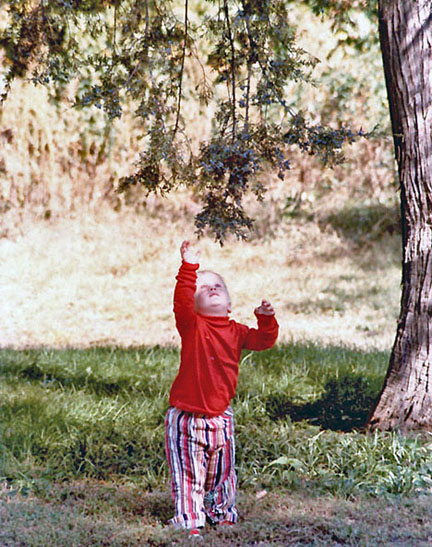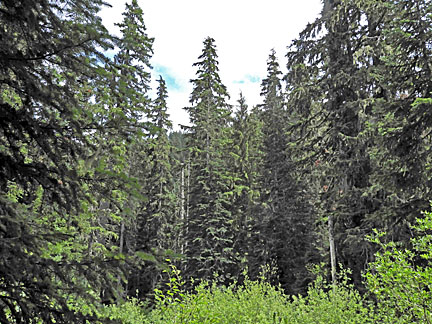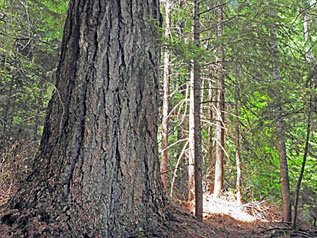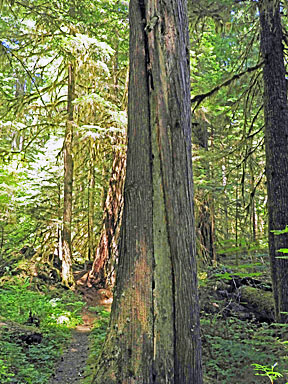|
|
| HOME | PROTECTION | NATURE | PLAN YOUR VISIT | FAQ | JOIN/DONATE | ABOUT |
| For more about trees in the proposed monument, go to Other Conifers and Douglas-fir tree. |
| Wandering among the Trees of the Doug |
 |
The Douglas Fir is the central focus of the Douglas-fir National Monument, but the proposed Monument is about so much more. There are many types of trees within the proposed Monument, and many ways of encountering the trees and the forest. When you visit the proposed Douglas-fir National Monument, especially if you are able to get to an Old Growth Forest you will see a variety of plants. The Douglas Fir is the dominant species. In replanted areas, the Douglas Fir may be the only tree. In old growth areas, the Douglas Fir is probably the largest tree, and perhaps the most numerous, but you are missing out on a great deal if you don't pay attention to the variety and wonder of an old-growth forest. |
| Telling trees apart is like
identifying birds in the wild, or wildflowers: sometimes it is easy,
often it is tricky. This is not a guide to identifying trees. There
are other pages designed to make an identification of the Douglas
Fir and of other
conifers in the Doug. This is a less precise discussion of what you might look for as you wander through the Doug and ask "what tree is that?" Chances are reasonably good that, if you wonder what a particular tree is in the Doug's forest, it will be a Douglas-fir. |
 |
| Most tree identification books direct you to look at the needles
or leaves in order to make a positive identification. Good luck with
that if you are standing in an old growth forest next to a 150 foot
tall tree. But there are some hints, even for big trees. The bark of a big Douglas-fir has a pattern of deep indentations and lighter protrusions of bark. The bark of other large trees is often also identifiable. |
 |
In the left hand picture, the old-growth Douglas-fir tree is
distinct. To the right, the Douglas-fir (on the right side) shows
the same pattern and is thus identifiable. The large spruce tree
is less distinct, but noticeably different from the Douglas Fir. |
 |
 |
On the trail to Cone Peak you can encounter, from the left,
Western Hemlock, Alaskan Cedar and Douglas Fir, growing close
together. Each has a distinguishable bark pattern in this picture.
On younger trees their bark is often worse than their bite, so
they are difficult to tell apart without also looking at the
needles. |
 |
|
There are other cedars in the Doug besides the Alaskan cedar. The tree in the right photo is a western red cedar (with some damage exposing the wood). To the left you can see a western hemlock. One secret to identifying a hemlock is the top. No matter how big they get, hemlock always have a drooping tip. |
 |
 |
|
In several of the trail descriptions, you learn that you will
encounter true firs on some of the hikes. The Douglas fir Pseudotsuga
menziesii is a different species from the "true firs" (Abies).
Grand Firs, Pacific Silver Firs, White Firs, Noble Firs and
Subalpine Firs are the Doug's true firs. In the Doug, the true firs
generally appear at higher altitudes, and have a narrower overall
stance, with sparser branches. Compare the photos to the right with
the Douglas Fir forest shown above. |
| You can explore some of the features of an Old Growth Visit. |
| For more about trees in the proposed monument, go to Other Conifers. |
| return to Protection Page | return to Nature Page |